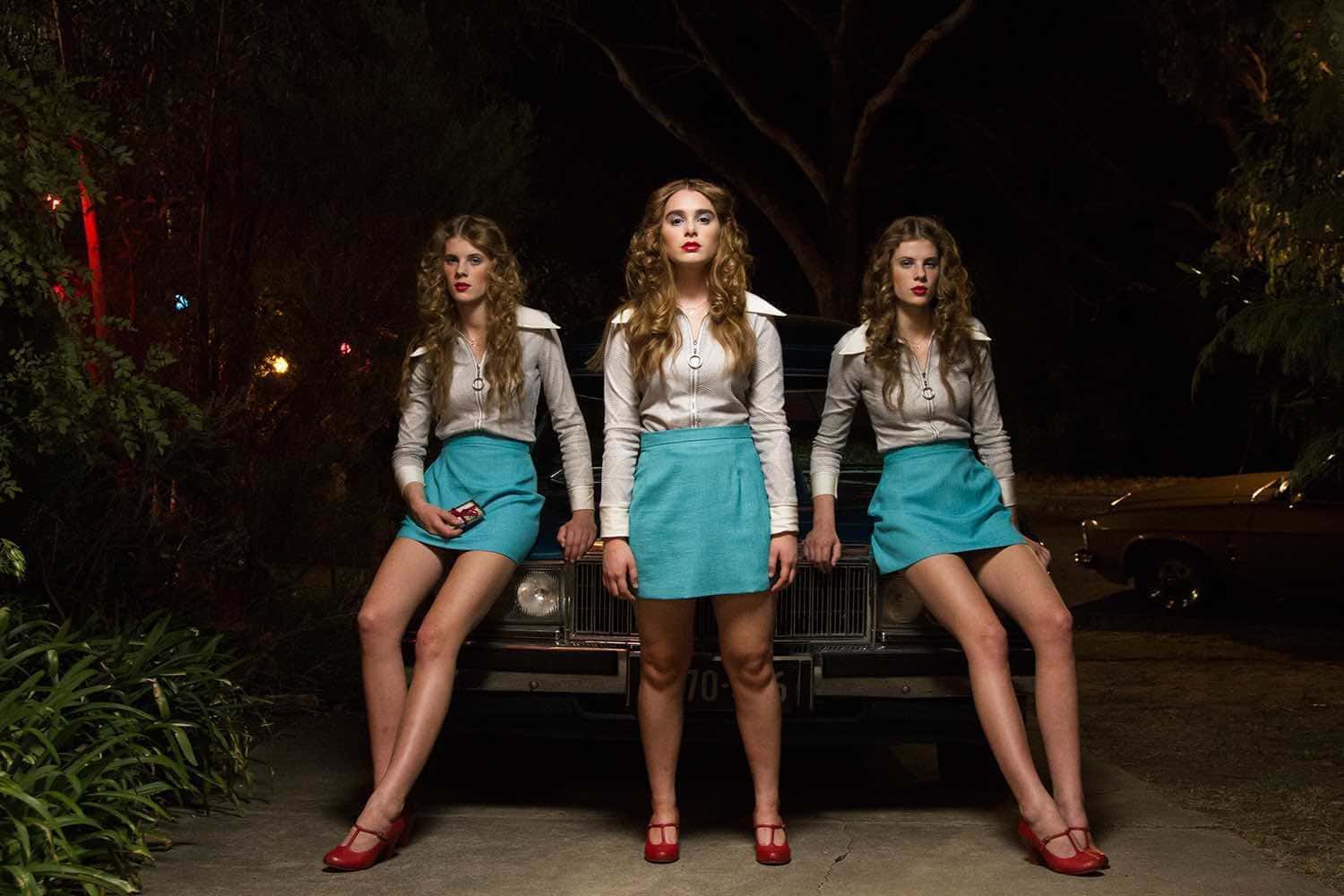Gillie Collins talked to director Rosemary Myers about adapting her Windmill theatre play Girl Asleep for the film. Collins also explores the many exaggerated, theatrical elements that define the film.

In 2013, Australia’s Windmill Theatre embarked on what director Rosemary Myers called “a bold experiment.” She applied to the Hive Fund, a program that supports stage-to-film projects in Australia. With the initiative’s help, she and her team adapted Girl Asleep, a 2014 play about adolescence, into a feature-length film. It was her first time making a movie.
Girl Asleep tells an almost archetypal story of growing up — one of loneliness, social anxiety, and the catharsis of imagination. It’s the 1970s, and Greta (Bethany Whitmore) is an outsider at her new school, a dog-eat-dog world with the requisite cast of characters, including a clique of mean girls, hyper-masculine jocks, and only one prospective friend, Elliott (Harrison Feldman). Back home, Greta’s parents want to help their daughter but don’t know how. For her birthday, they engineer an introvert’s worst nightmare: a massive party in which she is the center of attention.
 But Girl Asleep is not your typical coming of age film, partly because it seeks to exaggerate, rather than reproduce, reality. From the first scene — in which Greta and her new friend Elliott (Harrison Feldman) face a larger-than-life bully — the movie still feels like a play. Stylized costumes and cartoonish production design are anything but naturalistic; they do, however, capture Greta’s singular perspective. When she runs from her house into an enchanted forest, the film plunges head-first (without many special effects) into the supernatural, as Greta confronts her subconscious embodied. It is easy to imagine these scenes succeeding on stage, even when they seem too extreme, too sudden, for a movie.
But Girl Asleep is not your typical coming of age film, partly because it seeks to exaggerate, rather than reproduce, reality. From the first scene — in which Greta and her new friend Elliott (Harrison Feldman) face a larger-than-life bully — the movie still feels like a play. Stylized costumes and cartoonish production design are anything but naturalistic; they do, however, capture Greta’s singular perspective. When she runs from her house into an enchanted forest, the film plunges head-first (without many special effects) into the supernatural, as Greta confronts her subconscious embodied. It is easy to imagine these scenes succeeding on stage, even when they seem too extreme, too sudden, for a movie.
Myers first conceived the film as a modern, feminist take on Sleeping Beauty. Here, sleep is a portal into another dimension, but it also offers access to Greta’s psychic landscape. On her birthday, our heroine runs into her bedroom, closes her eyes, and winds up in another world. We wonder, in Myers’ words, “When is she awake? When is she asleep?”— as she outruns a pack of wolves; confronts reincarnations of her parents; and befriends Huldra, a mythic creatures from Scandinavian folklore. She is not the passive Sleeping Beauty we’ve been taught to expect.
[optin-monster-shortcode id=”u8kmppn65ogdxhj8″]
The movie is most exciting when we are immersed in Greta’s perspective. Myers remembers her own adolescence as “relatively suburban — but the stakes of things seemed high, at the time.” In Girl Asleep, it’s similarly difficult to parse what is objectively true and what isn’t. Do the most popular girls in school actually laugh in unison? Do they really walk down hallways in slow motion? Of course not — but these sequences convey how Greta feels around them: small and disposable.

The costumes in Girl Asleep turn characters into caricatures, individuals into archetypes. At her party, Greta dons a pink polka dot dress that, as Myers described, has a “lamb-to-the-slaughter feel.” The outfit brings Greta unwanted male attention. When she tries it on, her father and sister’s boyfriend are awestruck, and Elliot announces he wants to be “more than friends.” Greta, on the other hand, loathes the dress; she says she feels “painted up…like a doll.” Only in the end, when she switches into Elliot’s pantsuit, does she achieve a sense of freedom. Here, the film riffs on the notion that gendered clothing (and gender itself) is always a costume. We are never not dressed up.
Myers explained that she chose to set the movie in the 1970s because it was “a time of great transition for women in Australia…[when] you started to see women making careers” rather than being “just homemakers.” In the movie, Greta is exposed to “different kinds of [female] role models.” Her mother seems restless in her domestic role, and her sister “can’t wait to get out of the house [to]…backpack around Europe or something.” On the cusp of her own womanhood, Greta must decide what that means to her.
Myers spoke eloquently about the advantages of setting the movie in another time. “One of the great things about taking [stories] out of the contemporary era is that it makes it feel a little bit ‘other.’ [The 1970’s] were a bit more naïve. Young people didn’t have the extreme amount of information at their fingertips that they have now. They were a bit more sheltered.” And yet, much of Greta’s plight is universal. No matter who you are or where you live, adolescence raises basic questions about who you want to be. Each nightmare seems personal but isn’t.
Read more: “Benedict Andrews talks Una and directing for stage vs. screen part 1″ >>

